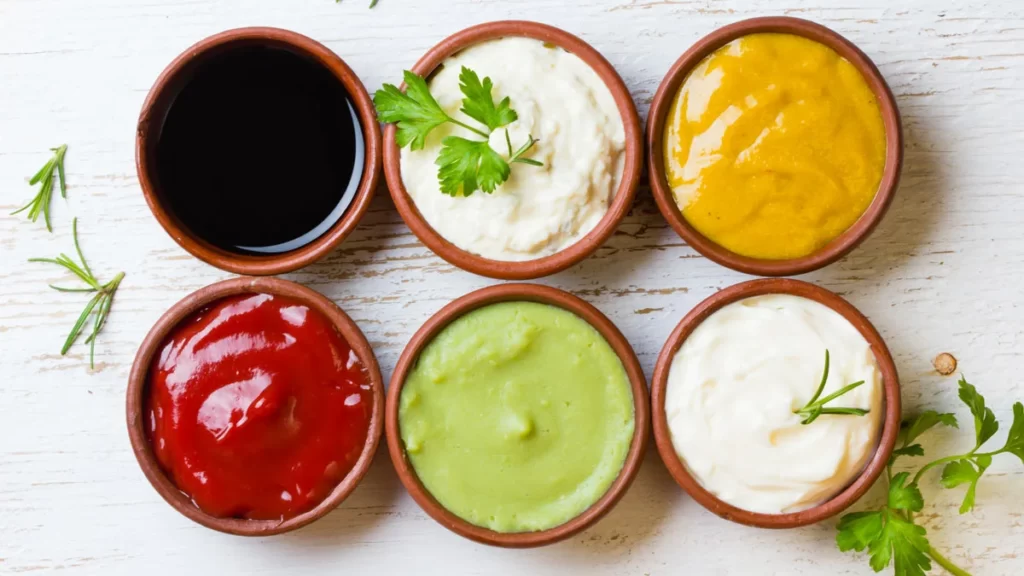Sauce, liquid or semiliquid combination that is introduced to meals as it chefs or this is served with it. Sauces offer flavor, moisture, and comparison in texture and color.
They may additionally function as a medium in which food is contained. Some of the sauces are an important component in a few meal recipes to deliver a unique taste and flavor. Soy sauce is predominantly utilized in Japanese cuisines.
In addition, they’re extensively utilized in salad dressing in addition to aspect dishes. Commonly used sauces consist of warm sauce, sriracha sauce, tomato sauce, and ketchup.
Here we discussed the 20 Most Popular Sauces In The World
1.Hoisin Sauces
A prominent ingredient in Asian cooking, hoisin sauce is used to glaze and flavor a wide range of grilled or stir-fried meat and fish dishes. It can also be used as a base for making more elaborate sauces, as a dipping sauce for appetizers like spring rolls, egg rolls, grilled tofu, and others, as well as for marinades.

The fragrant hoisin sauce is typically created with starches like sweet potato, wheat, or rice, fermented soybeans, sesame paste, garlic, rice vinegar, red chili peppers, and brown sugar. It also has a special combination of flavors. Hoisin sauce enhances the umami flavor of many traditional Chinese meals like Peking duck and moo shu pork with its distinct, well-balanced flavor of salty, sweet, and spicy elements.
2. Ragù alla Bolognese
Alberto Alvisi, Pope Pius VII’s cook, invented Ragù alla Bolognese in the late 18th century. This classic is cooked using beef, pork, or a combination of the two, as well as ripe, fresh tomatoes or tomato purée, red or very dry white wine, nutmeg, salt, and pepper as the base.
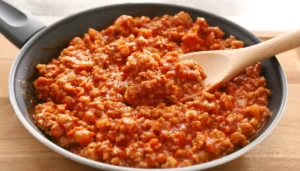
Italian pancetta and milk or cream are also popular additions. Ragù alla Bolognese is traditionally eaten with tagliatelle pasta and is an essential component of lasagne alla Bolognese. It goes great with pappardelle, fettuccine, and handmade farfalle.
3. Sauce tartare
Most likely originating in France, sauce tartare is a mayonnaise-based sauce. The alternative ingredients often consist of spices and predominantly chopped parsley, chervil, tarragon, capers, and pickles. The classic creamy foundation is created using mayonnaise, while certain versions may occasionally choose crème fraiche.
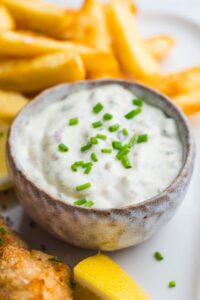
Boiling egg yolks are an optional addition. Despite being named after the Turkic-speaking Central Asian ethnic group known as the Tatars, the sauce has nothing to do with either the country or its inhabitants. Given that Tatars were notorious for their barbaric demeanour, the term likely refers to the sauce’s abrasive texture.
4. Cacık
Cack is a pleasant sauce made with strained or diluted yoghurt, finely diced cucumbers, and minced garlic that can be found in many forms throughout Turkey and the former Ottoman lands. Traditional flavours include olive oil, dill weed, mint, lemon juice or vinegar, and occasionally oregano, thyme, sumac, and paprika.
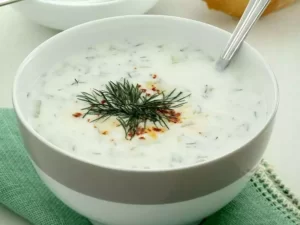
Cack is served chilled and is utilized in almost everything from appetizers to main courses. It goes especially well with traditional Turkish meat dishes like köfte and other kebabs. Cack is often served as a side dish in place of a salad, diluted with water, and eaten with a spoon, much like soup.
5. Mala Sauce
Sichuan peppercorns, chilli peppers, oil, and a variety of spices make up the brothy, spiciness of mala. It is regarded as one of the most well-liked sauces in Chinese cuisine, and there are numerous regional variations. The Sichuan peppercorns used to make the sauce are so hot that they are even referenced in its name, “málà,” which means “numbing and spicy” in Latin.
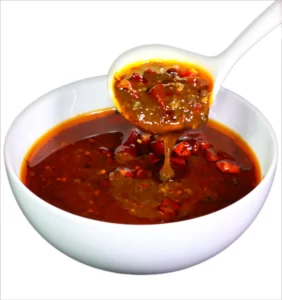
The most widely accepted hypothesis contends that the sauce was created in Sichuan in the 19th and 20th centuries, when the region was populated with pier workers who frequently consumed inexpensive meals such beef stomach, kidney, and solidified blood.
6. Béarnaise
This traditional French sauce is traditionally served as a garnish for grilled meat or fish. It’s light yellow in colour, smooth and creamy in texture, and made with egg yolks, shallots, reduced vinegar, and butter, with tarragon and chervil added for taste.

It is thought that Béarnaise was originally served on the menu of a restaurant called Le Pavillon Henri IV on the suburbs of Paris in 1836 by a chef named Collinet (the inventor of soufflé potatoes). Because the restaurant was named after Henri IV, it is claimed that the sauce was called after the Béarn area.
7. Rémoulade
This French sauce may be made as simply as mixing mayonnaise with herbs, capers, pickles, and a few optional drops of anchovy oil. The name “remoulade” is believed to have come from the French word “remolat,” which means “horseradish” in the Picardy dialect. The original sauce may have been produced with the hot root.

Remoulade is best known in France as the dressing for céleri rémoulade, a simple salad made of celery root that has been thinly julienned. Although it was initially served as a sauce with beef dishes, fish is now frequently eaten with it.
8. Pecel
When referring to a salad, Indonesian pecel may refer to a fragrant peanut sauce or a mix of the sauce and other vegetables. The sauce’s foundation is made of roasted peanuts and spices such as chilli peppers, palm sugar, garlic, tamarind juice, shrimp paste, kaffir lime leaves, salt, and kencur, a fragrant ginger type.
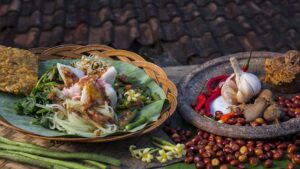
The sauce, which is typically associated with Java, is distinguished by its peculiar blend of sweet and spicy ingredients. When eaten with rice, the dish is known as nasi pecel.
9. Mole Poblano
Mole poblano, also known as mole rojo or red mole, is the most well-known mole sauce. It has at least twenty ingredients, including things like chocolate, cinnamon, black pepper, poblano chiles, cloves, and anise seeds. A common myth is that it was created in the 16th century in Puebla, Mexico, when members of the Santa Rosa convent produced a modified version of the original Aztec sauce to honour a visiting bishop.
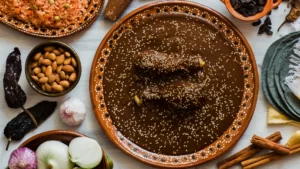
But it’s also connected to Oaxaca and its seven well-known moles. Some claim that the key to making a great mole is to roast the chile seeds, which burn and explode with flavour when combined with the sauce.
10. Lingonberry Jam
Every Swedish home has lingonberry jam on hand. The jam has been manufactured and enjoyed since ancient times and is made from bright-red, tart lingonberries that grow abundantly in Swedish woodlands. Lingonberries are simply combined with sugar to generate the raw version of the jam known as rrörda lingon.

The more popular type, which is commonly seen in supermarkets, is cooked with sugar and sold in jars. Lingonberries are sour when raw, but when combined with sugar, they produce a unique jam that is both spicy and sweet, complementing a wide range of foods.
11. Sofrito
Numerous recipes can be seasoned with sofrito, a fragrant blend of herbs and spices, although it is most frequently used as the foundation upon which the remainder of the dish can be made. Sofrito has Spanish roots and was introduced to Latin America by Spanish colonists in the late 1400s, despite the fact that it is today mostly identified with Latin American and Caribbean cuisine.
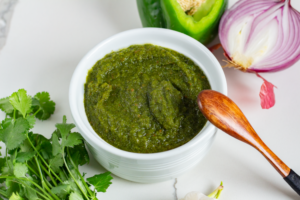
The word “sofrito” is Spanish for “to gently cook over a low heat.” The Libre de Sent Sov, one of the first European cookbooks from the 14th century, has the first reference of this method, which has been utilised in Catalan cooking since the Middle Ages.
12. Curry Paste
Gaeng is a Thai name for the world-famous Thai curry paste, which comes in yellow, red, or green varieties, classified by spiciness, with yellow curry being the mildest and green curry is the hottest. Yellow curry is made using roasted and powdered spices such as turmeric, anise, cinnamon, dried chilis, bay leaves, ginger, coriander, cumin, and fermented shrimp paste.
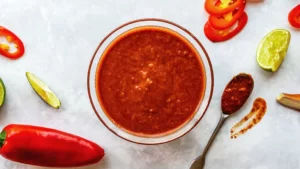
Yellow curries are frequently made with beef, lamb, or chicken, onions, potatoes, and pineapple. Coconut milk, red chilli powder, white pepper, cumin, nutmeg, coriander, garlic, lemongrass, ginger, and shredded kaffir limes are all used in red curries.
13. Tomate frito
A common Spanish sauce called tomate frito is made up of puréed fried tomatoes, salt, sugar, olive oil, and onions. This classic sauce may be used as a basis for pasta, lasagna, or pizza in addition to being utilised in a variety of fish and meat recipes.

For additional taste, bay leaves, garlic, or basil may occasionally be used. The sauce is available in most Spanish stores or can be produced at home.
14. Vietnamese Fish Sauce (Nước chấm)
This popular Vietnamese sauce is made with a sour base of lime juice, or alternatively vinegar, sugar, water, and fish sauce. Finely sliced jalapeño peppers, garlic, shallots, spring onions, ginger, or fresh herbs are popular additions.
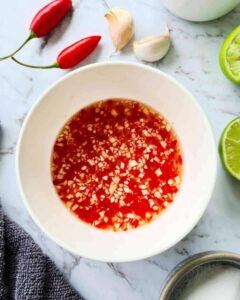
The sauce comes in numerous geographical variations, and the final composition may also vary depending on the type of cuisine served with it. Nc chm is typically served as a dipping sauce with ch gi (spring rolls), bánh xèo (crispy pancakes), different meat or seafood dishes, noodles, and soups.
15. Sugo di carne
Ground beef, pig, or a mixture of the two is sautéed in this traditional Italian meat sauces along with a sofrito of onions, carrots, and celery, a dash of red wine, and canned tomatoes. The combination is often seasoned with salt and pepper, while tomato paste and porcini mushrooms are optional additions.
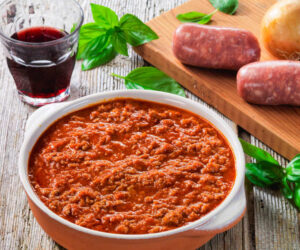
Sugo di carne is frequently eaten with pasta dishes like pappardelle, rigatoni, tagliatelle, or fetuccine, which are frequently topped with freshly grated parmesan cheese. The creation of lasagna commonly incorporates this classic beef sauce.
16. Rica-rica
The word “rica-rica” refers to any cuisine that uses the spiciest spice blend from Indonesia. Chili serves as the primary ingredient in this spicy sauce-like spice blend, which is also composed of shallots, garlic, ginger, lime leaves, lemongrass, and salt.
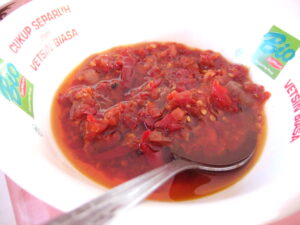
The spices can be minced, crushed, sliced, or occasionally even burnt before being added to the mixture. To liberate all the tastes and smells, the combination is traditionally stir-fried separately. Once prepared, rica-rica may be used in a variety of cuisines and the flavor and spiciness can both be readily altered.
17. Bordelaise sauce
Bordelaise sauce, which is frequently served with meat and other savory meals, is made with chopped shallots and spices reduced in dry red wine over medium to high heat. The sauce is called after Bordeaux, France’s most important wine-producing area.

To enhance the tastes, a demi-glace (a blend of bone marrow and broth) may be added to the sauce. Bordelaise sauce is traditionally served with steaks, veal, hog, or lamb, although some chefs like to use it as a seasoning for mashed potatoes or mushrooms.
18. Sugo all’arrabbiata
The ingredients for sugo all’arrabbiata, a hot Italian sauces, are tomatoes, garlic, olive oil, and red chili flakes. Typically, the sauce is seasoned with salt and pepper, with the addition of sugar being optional. The word arrabbiata, which derives from the Lazio region and meaning “angry,” alludes to the sauce’s intense heat.
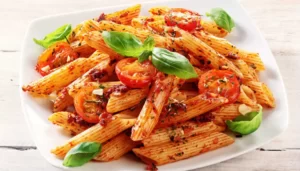
Sugo all’arrabbiata is typically eaten with pasta like penne, rigatoni, or capunti since all of those noodle shapes are good at soaking up this spicy red sauce.
19. Salsa verde toscana Sauces
Tuscan salsa verde is a typical green Italian sauce from Tuscany. It’s created with parsley, eggs, anchovies, capers, pine nuts, garlic, olive oil, giardiniera (mixed pickled vegetables), and spices. The eggs are cooked, chopped, and blended with the remaining ingredients until the texture is smooth.

The mixture is then thickened with olive oil until it is creamy. The sauce is let alone for a few minutes to allow all of the flavors to mix before being served over bollito misto or in lampredotto sandwiches. Salsa verde is sometimes served with crostini.
20. Beurre noisette
A rich brown sauce with a little nutty flavor known as beurre noisette is frequently used to make sweets and pastries. It typically goes well with many different main dishes, especially ones that include seafood. Despite not having any hazelnuts, the sauce is commonly known as brown butter or hazelnut butter.
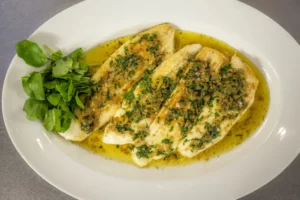
In order to prevent it from burning and becoming inedible, it is created by melting and browning (preferably, unsalted) butter for a set amount of time. Beurre noisette Sauces is frequently drizzled on vegetables or pasta meals, but it also gives pastries a toasted flavor and aids in the even baking and browning of such foods.

